Vanishing Wars: The Affect of Camouflage in Nature
Biology 342 Fall 2014
Nick Morales
Comparing Human and Animal Camouflage
How Does Human Camouflage Compare with that of Animals?
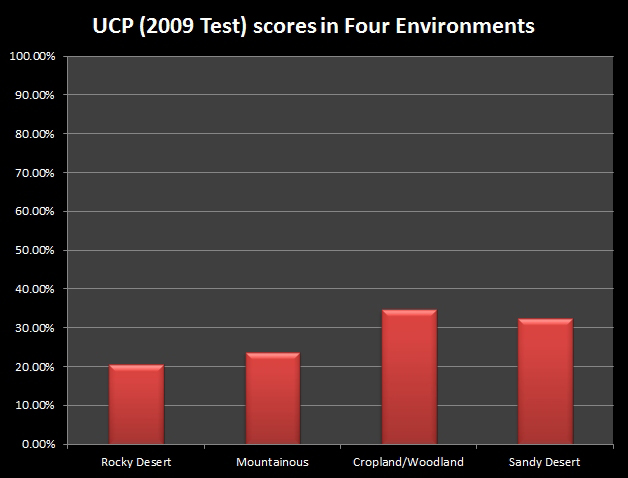 If we are going to test out how well human camouflages perform against animal based camouflage then we will have to find a human made camouflage that performs very well. Luckily the United States Army, USA, has just recently completed a multiyear contest to determine a new camouflage to replace the pattern chosen in 2004. While there was also an investigation by the US Congress after multiple complaints from soldiers that the then, and for the moment still, current camouflage pattern was putting them at undue risk, see photo at right; the USA had already been investigating how to improve their soldiers' ability to remain concealed in combat with a testing process that had four phases and concluded in 2014. While the contest went on to never have the winner officially announced and be ignored by the USA , due to the Army leadership's alleged unwillingness to pay a patent fee, there is little doubt that the four applicants who proceeded into the phase four tests most likely represent some of the best camo patterns currently available.
If we are going to test out how well human camouflages perform against animal based camouflage then we will have to find a human made camouflage that performs very well. Luckily the United States Army, USA, has just recently completed a multiyear contest to determine a new camouflage to replace the pattern chosen in 2004. While there was also an investigation by the US Congress after multiple complaints from soldiers that the then, and for the moment still, current camouflage pattern was putting them at undue risk, see photo at right; the USA had already been investigating how to improve their soldiers' ability to remain concealed in combat with a testing process that had four phases and concluded in 2014. While the contest went on to never have the winner officially announced and be ignored by the USA , due to the Army leadership's alleged unwillingness to pay a patent fee, there is little doubt that the four applicants who proceeded into the phase four tests most likely represent some of the best camo patterns currently available.
The USA required that all testing applicants provide up to two unique camouflage families that each shared a distinct pattern geometry. It was also required that all submissions were able to surpass a minimum baseline in three distinct testing environments, desert, jungle/woodland, and transitional. The USA used AOR 1 and AOR 2 as the baseline patterns for the desert and jungle/woodland environment respectively and OCP, Operation Enduring Freedom Camouflage Pattern, for the transitional baseline. These three environmental categories were chosen due to recent conflicts in countries like Afghanistan were terrain did not fit the classic testing environments of largely forest or desert but instead the terrain fell in between these two environments, as does a large portion of the biosphere. However the USA also wanted to have what they referred to as bookend patterns for the environments that fit better in the desert and various forest environments. There was also the option to submit a fourth pattern to manufactured on all load bearing gear as the USA was hoping to reduce the cost of a complete camouflage change by merely producing that equipment in one pattern while procuring uniforms in the three environment based patterns. Out of the four finalists: Crye Precision, Kryptek Outdoor Group, Brookwood Companies, and ADS Inc./Hyperstealth, I have chosen to use the submission from ADS Inc./Hyperstealth as a good representative of what a well designed human camouflage looks and performs like.
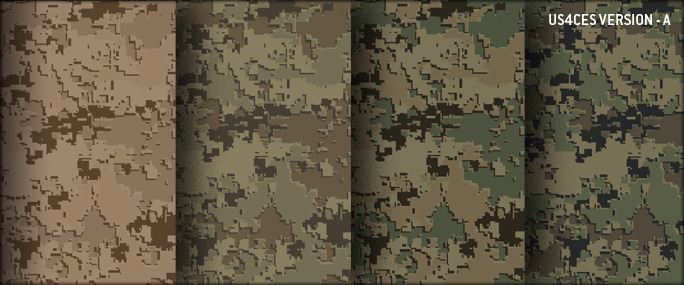 The camo pattern that was submitted to the USA by Hyperstealth was a digital camouflage based off of the lifework of Guy Cramer, a Canadian expert on camouflage that has helped to develop camouflage used by both NATO members, the United States Marine Corps, the Jordanian Special Forces, the Afghan National Army, video game designers, toy lines, and a number of other parties. In addition he has also won a contest held by MIT to improve solar panels and created a working invisibility fabric. While Hyperstealth admitted two unique pattern geometries to the USA only one of them was able to make it to the final phase four testing and Mr. Cramer dubbed this pattern US4CES, see picture on left. US4CES is a pattern based off of Mr. Cramer's algorithms revolving around fractal geometry. Fractal geometry refers to the principle that in nature there are a number of items whose components look very similar to the object as a whole. As an example, a tree can be thought of as a series of fractals where the twigs and branches form tree like shapes and that these small, micro, tree like shapes are joined together and form a large, macro, tree like shape. The human brain sees fractals and uses them to develop ideas of what a natural object looks like and therefore can be overlooked in the environment. Mr. Cramer concluded that to create a winning camouflage for the USA trials he needed to develop a pattern that was able to perform well in both the micro and macro realms. While this pattern does not seem to reflect any object in nature with its sharp lines the fact is that at a certain distance the brain begins to confuse the pattern with something that should be a naturally occurring object because it seems to have depth and shadows due to this strange geometry and color pattern.
The camo pattern that was submitted to the USA by Hyperstealth was a digital camouflage based off of the lifework of Guy Cramer, a Canadian expert on camouflage that has helped to develop camouflage used by both NATO members, the United States Marine Corps, the Jordanian Special Forces, the Afghan National Army, video game designers, toy lines, and a number of other parties. In addition he has also won a contest held by MIT to improve solar panels and created a working invisibility fabric. While Hyperstealth admitted two unique pattern geometries to the USA only one of them was able to make it to the final phase four testing and Mr. Cramer dubbed this pattern US4CES, see picture on left. US4CES is a pattern based off of Mr. Cramer's algorithms revolving around fractal geometry. Fractal geometry refers to the principle that in nature there are a number of items whose components look very similar to the object as a whole. As an example, a tree can be thought of as a series of fractals where the twigs and branches form tree like shapes and that these small, micro, tree like shapes are joined together and form a large, macro, tree like shape. The human brain sees fractals and uses them to develop ideas of what a natural object looks like and therefore can be overlooked in the environment. Mr. Cramer concluded that to create a winning camouflage for the USA trials he needed to develop a pattern that was able to perform well in both the micro and macro realms. While this pattern does not seem to reflect any object in nature with its sharp lines the fact is that at a certain distance the brain begins to confuse the pattern with something that should be a naturally occurring object because it seems to have depth and shadows due to this strange geometry and color pattern.
However if we are going to have a fair comparison with these camouflages created to fulfill USA requirements, then we will need to use camouflages that arguably represent those environments. For these tests I chose the camouflage patterns found on tigers, jaguars, green chameleons, and desert tortoises. I have chosen the following animal patterns based off of the environments that constitute the native range of those animals. Tigers and jaguars both inhabit diverse ranges that include jungle, open grassland, dry regions, and in the case of the jaguar, desert. Therefore I suspected that those animals must have camouflage that is able to perform well in those types of environments. The green chameleon was chosen because despite the fact that chameleons can change their color readily, there are a large number of these animals that are found in very dense jungles and this was the primary reason I chose that animal based camouflage pattern. The desert tortoise was chosen since it was one of the subjectively better performing desert camouflages that I could find in an animal. OCIE does not have any true analogous meaning in the evolutionary world so that is the tiger pattern was included as it is meant to perform acceptably in multiple environments. I have also chosen to factor in whether I believe the color way of the animal pattern would be able to blend in well with the test environment.
Testing Human and Animal Camouflage
 On the left are the patterns that I have chosen to test in order to reach some kind of conclusion about how effective animal and human camouflages are relative to one another. I have decided to use picture within picture testing to make this comparison due to my limited personal resources as I cannot readily go to each testing environment and implant these camouflage patterns within them. In the pictures I have made some adjustments to the patterns via Photoshop but these are solely limited to attempts to make the lighting of the pattern match the lighting of the scene and to make the size of the picture match with what I believe to be the depth of the image.
On the left are the patterns that I have chosen to test in order to reach some kind of conclusion about how effective animal and human camouflages are relative to one another. I have decided to use picture within picture testing to make this comparison due to my limited personal resources as I cannot readily go to each testing environment and implant these camouflage patterns within them. In the pictures I have made some adjustments to the patterns via Photoshop but these are solely limited to attempts to make the lighting of the pattern match the lighting of the scene and to make the size of the picture match with what I believe to be the depth of the image.

Here is a grassland found in North America in what is the land of the Oglala Sioux. In this picture there are the following camouflages: tiger, jaguar, green chameleon, desert tortoise, US4CES OCIE, and US4CES Transitional. See if you are able to spot all of them.
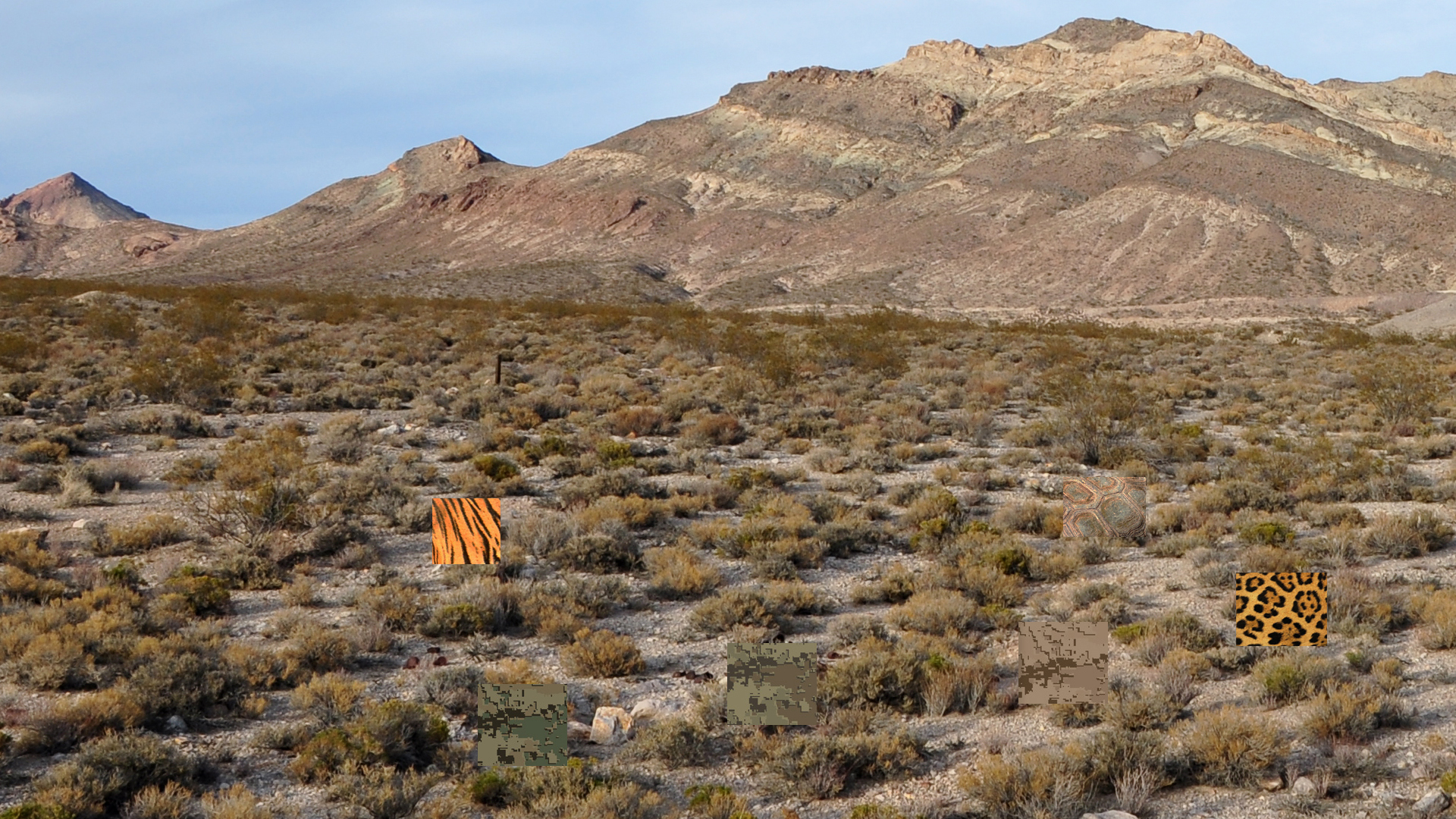 Here is a sagebrush area found in the Amargosa Desert in North America. In this picture there are the following camouflages: tiger, jaguar, desert tortoise, US4CES OCIE, US4CES Transitional, and US4CES Arid. See if you are able to spot all of them.
Here is a sagebrush area found in the Amargosa Desert in North America. In this picture there are the following camouflages: tiger, jaguar, desert tortoise, US4CES OCIE, US4CES Transitional, and US4CES Arid. See if you are able to spot all of them.
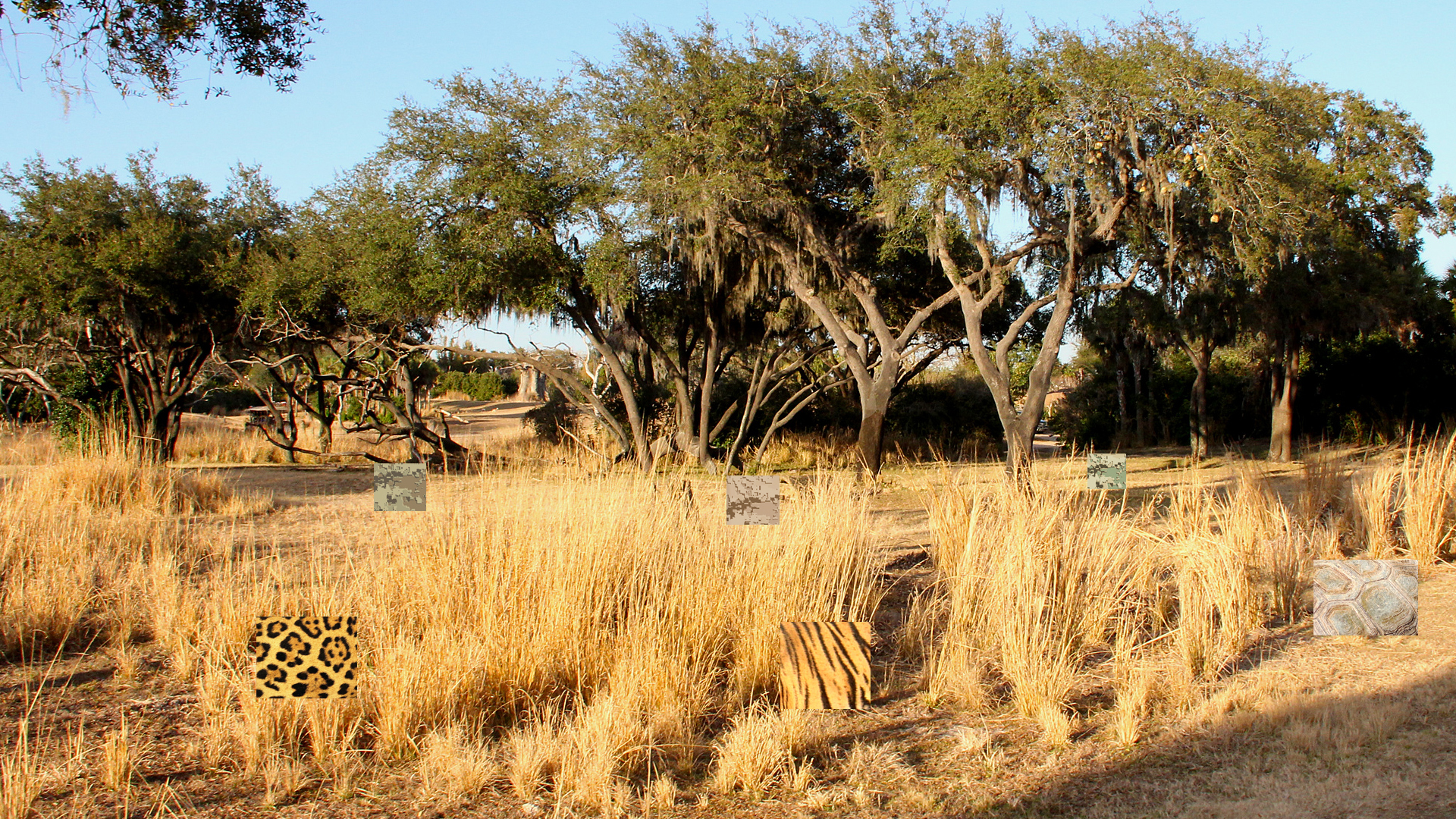 Here is a savannah region in Africa. In this picture there are the following camouflages: tiger, jaguar, desert tortoise, US4CES OCIE, US4CES Transitional, and US4CES Arid. See if you are able to spot all of them.
Here is a savannah region in Africa. In this picture there are the following camouflages: tiger, jaguar, desert tortoise, US4CES OCIE, US4CES Transitional, and US4CES Arid. See if you are able to spot all of them.
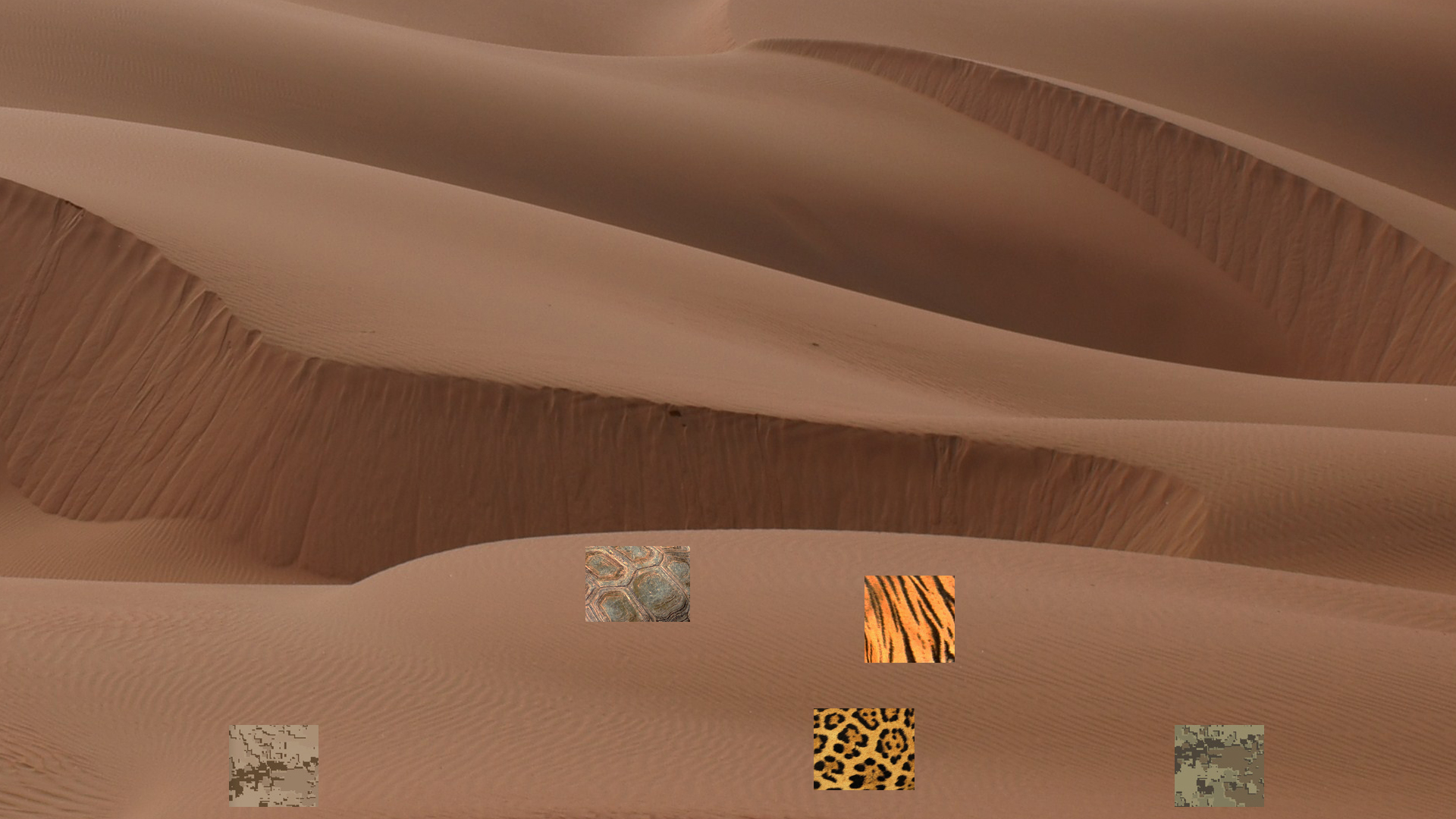 Here is a portion of the Rub al Khali, the world's largest sand desert located on the Arabian Peninsula. In this picture there are the following camouflages: tiger, jaguar, green chameleon, desert tortoise, US4CES OCIE, and US4CES Arid. See if you are able to spot all of them.
Here is a portion of the Rub al Khali, the world's largest sand desert located on the Arabian Peninsula. In this picture there are the following camouflages: tiger, jaguar, green chameleon, desert tortoise, US4CES OCIE, and US4CES Arid. See if you are able to spot all of them.
 Here is a landscape picture taken in Nambia, an African country. In this picture there are the following camouflages: tiger, jaguar, desert tortoise, US4CES OCIE, US4CES Transitional, and US4CES Arid. See if you are able to spot all of them.
Here is a landscape picture taken in Nambia, an African country. In this picture there are the following camouflages: tiger, jaguar, desert tortoise, US4CES OCIE, US4CES Transitional, and US4CES Arid. See if you are able to spot all of them.
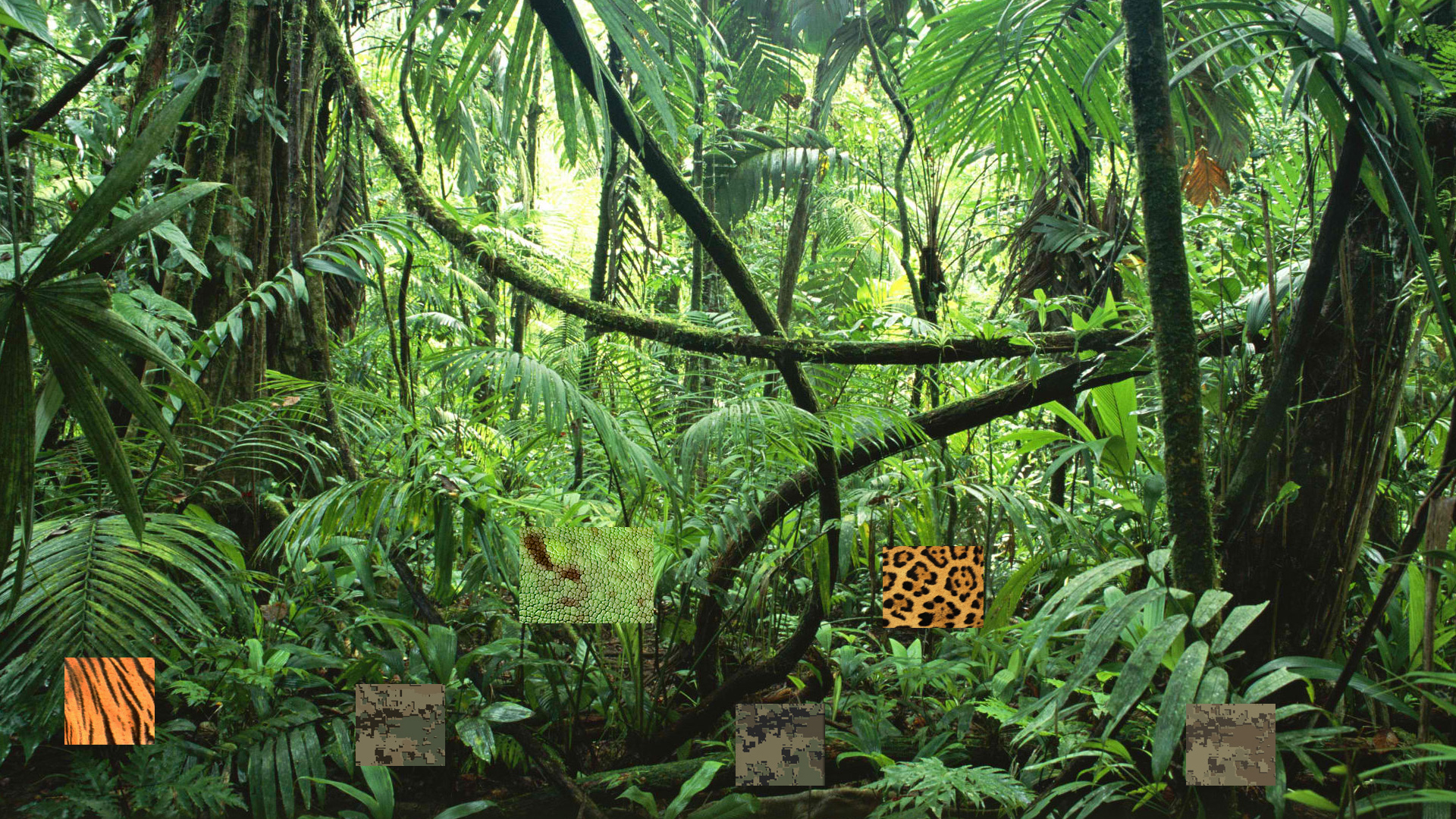 Here is a photograph representative of thick undergrowth in a jungle or tropical rainforest. In this picture there are the following camouflages: tiger, jaguar, green chameleon, US4CES OCIE, US4CES Transitional, and US4CES Woodland. See if you are able to spot all of them.
Here is a photograph representative of thick undergrowth in a jungle or tropical rainforest. In this picture there are the following camouflages: tiger, jaguar, green chameleon, US4CES OCIE, US4CES Transitional, and US4CES Woodland. See if you are able to spot all of them.
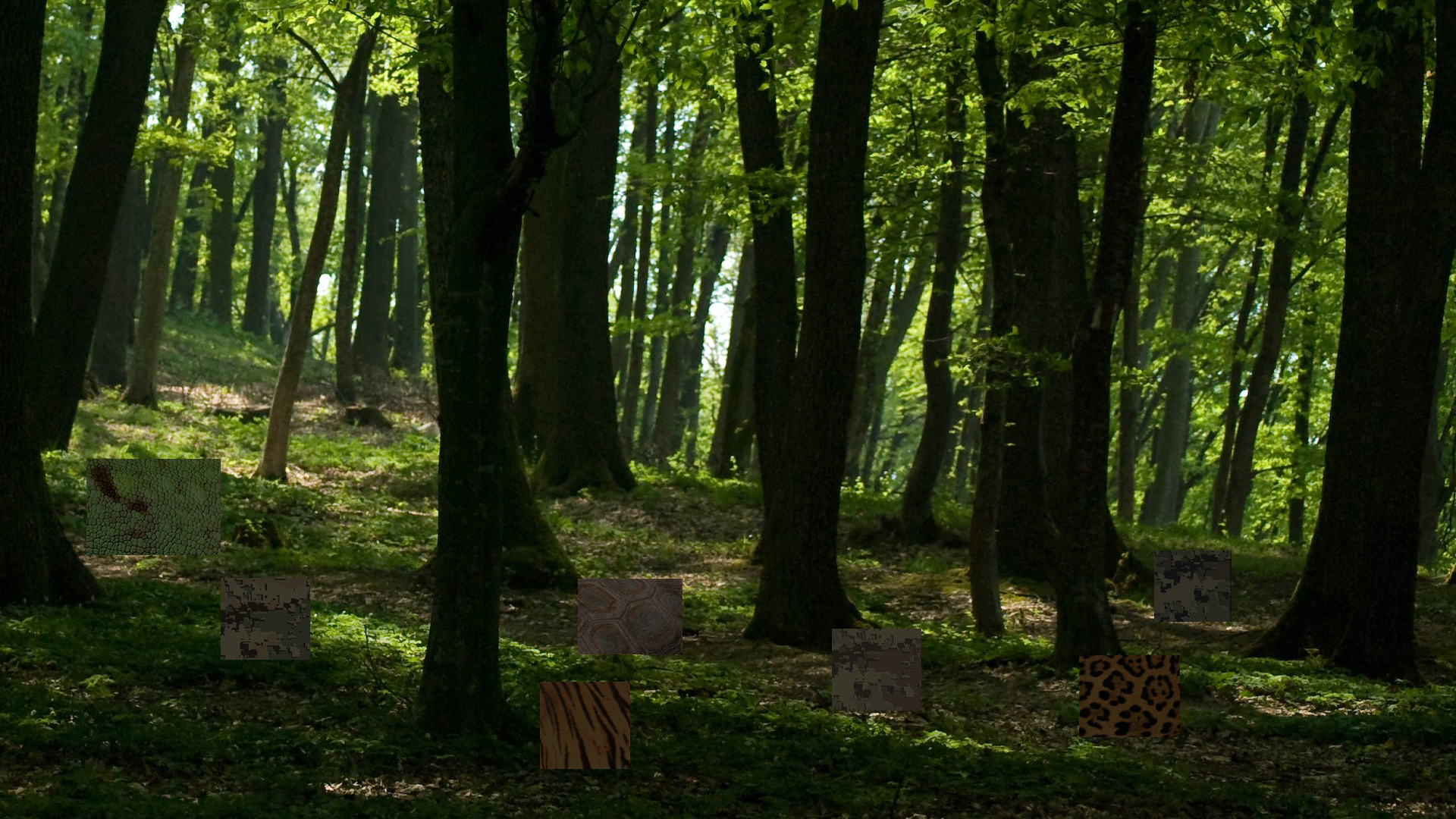 Here is a photograph representative of a common decidous tree forest. In this picture there are the following camouflages: tiger, jaguar, green chameleon, desert tortoise, US4CES OCIE, US4CES woodland and US4CES Transitional. See if you are able to spot all of them.
Here is a photograph representative of a common decidous tree forest. In this picture there are the following camouflages: tiger, jaguar, green chameleon, desert tortoise, US4CES OCIE, US4CES woodland and US4CES Transitional. See if you are able to spot all of them.
Understanding the Results
One thing that may start to become confusing about the results of these picture within picture tests is that; the jaguar and tiger patterns performed poorly in nearly every test; the desert tortoise pattern performed well in almost every test it was involved in; and, the US4CES patterns did not seem to perform exceptionally well in the overall testing. Why these results have come about probably says more about my testing methodology than it does about any of the patterns used in these tests.
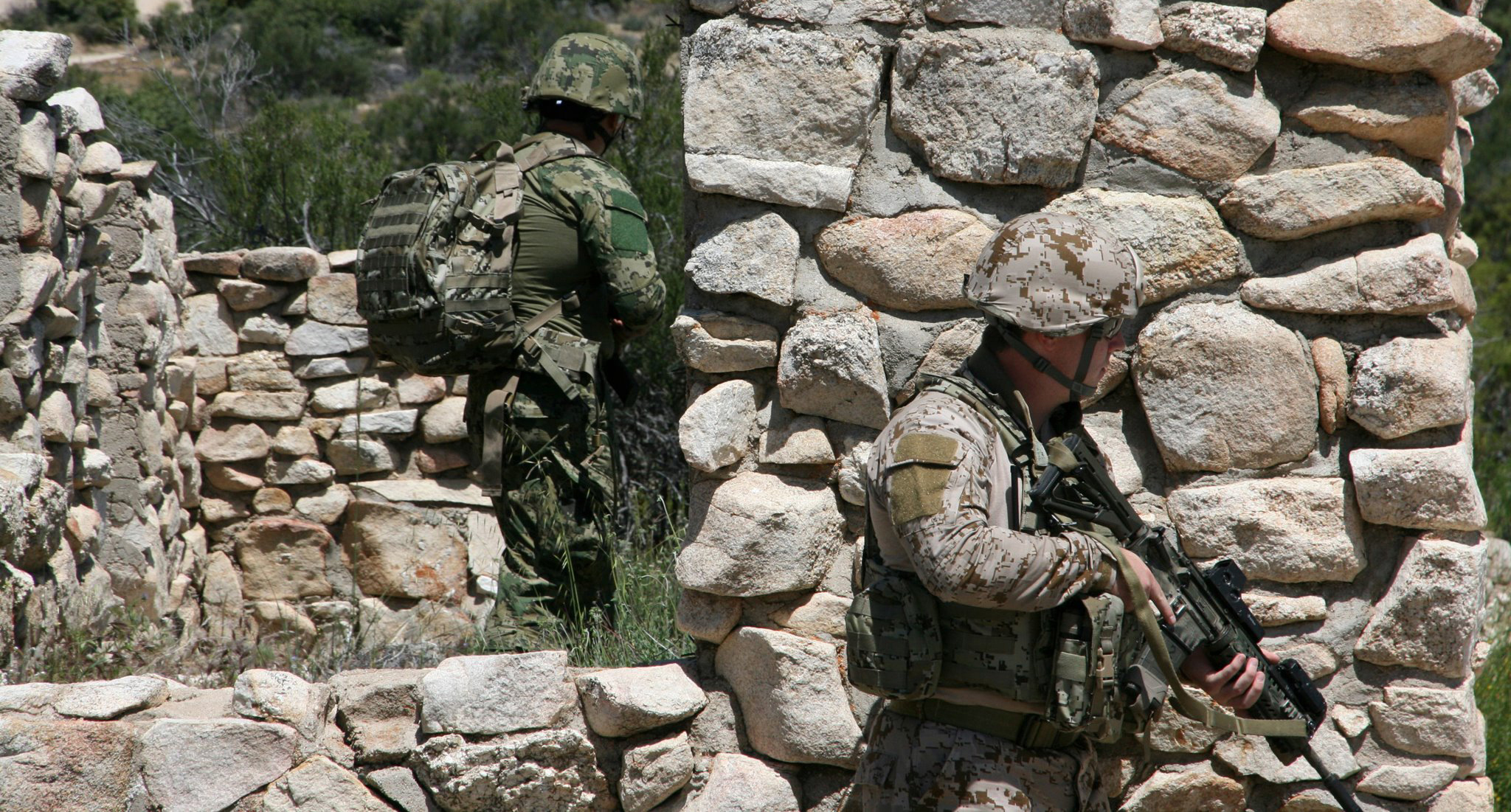
As can be seen from the picture on the right, the US4CES camo patterns are able to provide high levels of concealment within each of their respective environments. So why is it that in the comparative photos above that these patterns may not have performed at very high levels? It most likely has to do with how I accounted for the lighting and depth of each of the photographs. I feel as though I came the closest to matching the lighting conditions for the forest photograph and that I came the closest to matching the theoretical depth in the savannah picture as the size of the majority of the pictures are closer to what the animals or people would presumably look like at those distances.
However there is one very important topic to be covered when trying to compare animal and human based camouflage; primates see the world in a quantitatively different way than other animal species. Primates have a unique eye structure that allows them to have a greater distinction between red and green colors compared to say a deer that cannot distinguish as well between reds and greens. What this means is that most animals are unable to see many of the same types of colors as human beings. Therefore an animal like a tiger might not need to worry about having a red orange fur color since the majority of its prey cannot readily distinguish between the gray grass, the gray tiger fur and the gray ground. Instead those prey animals rely on seeing shapes or hearing sounds that seemingly correspond with a predator.
What this means in the end is that it is difficult to compare human and animal camouflage without making a critical decision. Do you choose to compare these two types of concealment systems on what an animal can see or based on what a human can see? If you choose to focus on how humans see these different camouflages then you are likely to see a number of different animal patterns as surprisingly ineffective based off of our superior ability to distinguish between colors. If you look at these patterns based on what an animal can see then human camouflages do not always stack up as well.
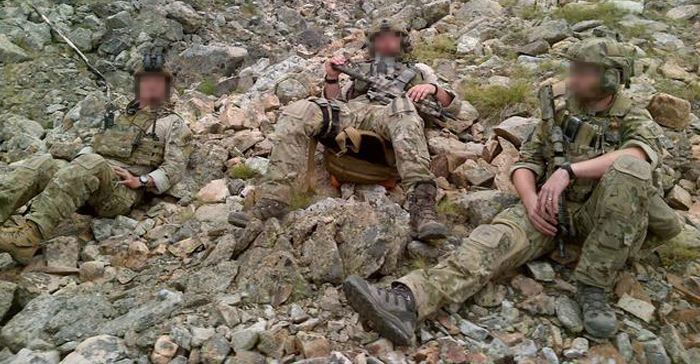 The reason for this is that most human based camouflages are biased towards being compatible with multiple types of environments as they were originally developed to improve military equipment's ability to stay hidden. At the era of the early 20th century it became apparent that military technology had advanced enough that using bright colorful uniforms was no longer an acceptable way to dress troops and so there were attempts made to produce clothing in more natural tones that would blend in better with forests, plains, and towns. Human based camouflage, such as Multicam by Crye Associates has to be effective not just one a corner of a mountain, a single mountain, or even one specific mountain range, but all mountain ranges in which combat troops could be deployed, see photo on the left. A camouflage that doesn't fit that requirement is not very suitable for combat personnel as they have to move through a variety of terrains throughout their hazardous time in service to their countries.
The reason for this is that most human based camouflages are biased towards being compatible with multiple types of environments as they were originally developed to improve military equipment's ability to stay hidden. At the era of the early 20th century it became apparent that military technology had advanced enough that using bright colorful uniforms was no longer an acceptable way to dress troops and so there were attempts made to produce clothing in more natural tones that would blend in better with forests, plains, and towns. Human based camouflage, such as Multicam by Crye Associates has to be effective not just one a corner of a mountain, a single mountain, or even one specific mountain range, but all mountain ranges in which combat troops could be deployed, see photo on the left. A camouflage that doesn't fit that requirement is not very suitable for combat personnel as they have to move through a variety of terrains throughout their hazardous time in service to their countries.
 This differs from what an animal may require as some species spend their entire lives in a very small region of the environment. Some blend in so well with their environment that they become almost indistinguishable from plants or inorganic, non living, features of that ecosystem, as seen in the photo on the right. While the camouflage these animals employ must also be very effective their lives depend on it in a way that is different than how a soldier depends on their camouflage.
This differs from what an animal may require as some species spend their entire lives in a very small region of the environment. Some blend in so well with their environment that they become almost indistinguishable from plants or inorganic, non living, features of that ecosystem, as seen in the photo on the right. While the camouflage these animals employ must also be very effective their lives depend on it in a way that is different than how a soldier depends on their camouflage.